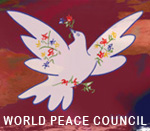NATO: 65 Years Later
| Activities - nato-aggression-15-years-after |
"Rick Rozoff" rwrozoff
When the U.S. recruited its Western European military allies to jointly create the North Atlantic Treaty Organization in 1949, it was with the purpose of perpetuating American military presence on the European continent and to introduce nuclear weapons in Europe for the first time.
Currently, sixty-five years afterward, the Pentagon continues to maintain air, infantry and naval bases in Britain, Spain, Portugal, Germany, Italy, Norway, Greece, Turkey and other older NATO member states and, in addition, courtesy of the past fifteen years' NATO expansion, has acquired new bases directly and under NATO auspices in Kosovo, Bulgaria, Romania, Poland, Lithuania, Estonia, Hungary and the Czech Republic. These military facilities include (the permanent use of) air bases in Hungary (the world's first multinational global strategic airlift operation in Papa), Bulgaria, Romania, Lithuania, Estonia and Poland, which the U.S. has spent millions of dollars modernizing and expanding over the past ten years.
Washington first deployed nuclear bombs to Europe in 1949 immediately after the founding of NATO, before the Soviet Union developed its first atomic bomb, and continues to this day to maintain B61 nuclear bombs on air bases in Belgium, Germany, Italy, the Netherlands and Turkey under the provisions of what is alternately called the NATO burden sharing or NATO nuclear sharing arrangement. The tactical nuclear bombs in question are American, but under the conditions of the NATO agreement they are to be delivered by the air forces of the respective host nations.
With the announcement by Washington of what it calls the European Phased Adaptive Approach interceptor missile system in 2009 and the subsequent endorsement of it by NATO, the Atlantic Alliance has become the Pentagon's chief mechanism for the "Son of Star Wars" missile shield to be deployed in and cover all of Europe (except for Russia and Belarus) and the seas bordering the continent and as building blocks in a proposed global (and space-based) interceptor missile program.
NATO member states collectively spend over a trillion dollars a year on arms and the military.
***
When Turkey invaded North Cyprus in 1974, the North Atlantic Treaty Organization neither acted to prevent nor criticized that act of aggression because Turkey is a member of NATO and Cyprus was not. Forty years later when the people of Crimea voted overwhelmingly to leave post-coup Ukraine and affiliate with the Russian Federation, a completely peaceful process, NATO in response has mounted a steady drumbeat of threats regarding its Article 5 provision concerning "collective defense," which is to say concerted military efforts. In common parlance, war.
With the defeat of the ruling AKEL party in Cyprus last year and the formation of a pro-NATO government which immediately gave its American and other Western backers what they demanded - the express offer to join NATO's Partnership for Peace transitional program, the program employed to prepare the 12 Eastern European nations that NATO absorbed as full members in the decade from 1999-2009 - now all of the 39 European nations (42 if the countries of the South Caucasus are included and excluding the mini- or micro-states of Andorra, Liechtenstein, Monaco, San Marino and Vatican City) are either full NATO members or members of one or more NATO military partnership programs: The Partnership for Peace, the Adriatic Charter, the aspirant countries category, Individual Partnership Action Plan, Membership Action Plan, Annual National Programmes, etc.
With other partnership programs - the Mediterranean Dialogue (in north Africa and the Middle East), the Istanbul Cooperation Initiative (in the Persian Gulf), the new Partners Across the Globe (Afghanistan, Australia, Iraq, Japan, Mongolia, New Zealand, Pakistan and South Korea to begin with) and evolving individual arrangements with nations in Latin America (Colombia and El Salvador to date) - NATO members and partners now constitute over 70 nations, more than a third of the countries in the world, on every inhabited continent.
In addition, in recent years NATO has been striving to establish partnerships with the ten-nation Association of Southeast Asian Nations (ASEAN), the 54-nation African Union, India, China and other nations throughout the world. NATO, in short, has in the post-Cold War epoch expanded into the world's largest and history's first global military bloc. One which over the past fifteen years has waged full-fledged wars in three continents - Europe (Yugoslavia in 1999), Asia (Afghanistan to the present day) and Africa (Libya in 2011) - and which has subsequently incorporated the defeated and conquered nations, or fragments thereof, into its international network of military partnerships.
As with many workers in the U.S. and other nations, 65 years of age should be the age of mandatory retirement for this dangerous, most dangerous of all, threat to world peace.
| < Prev | Next > |
|---|
| Overstatement from Davos 2017. |
Liberal corporative capitalism, for reasons of lowering traveling costs, proposed not to travel to history alone but packed togather with NATO, EU and unipollar World Order. Workers participation has good chances to step in provisionally, buying time for full scale workers selfmanagment. |









